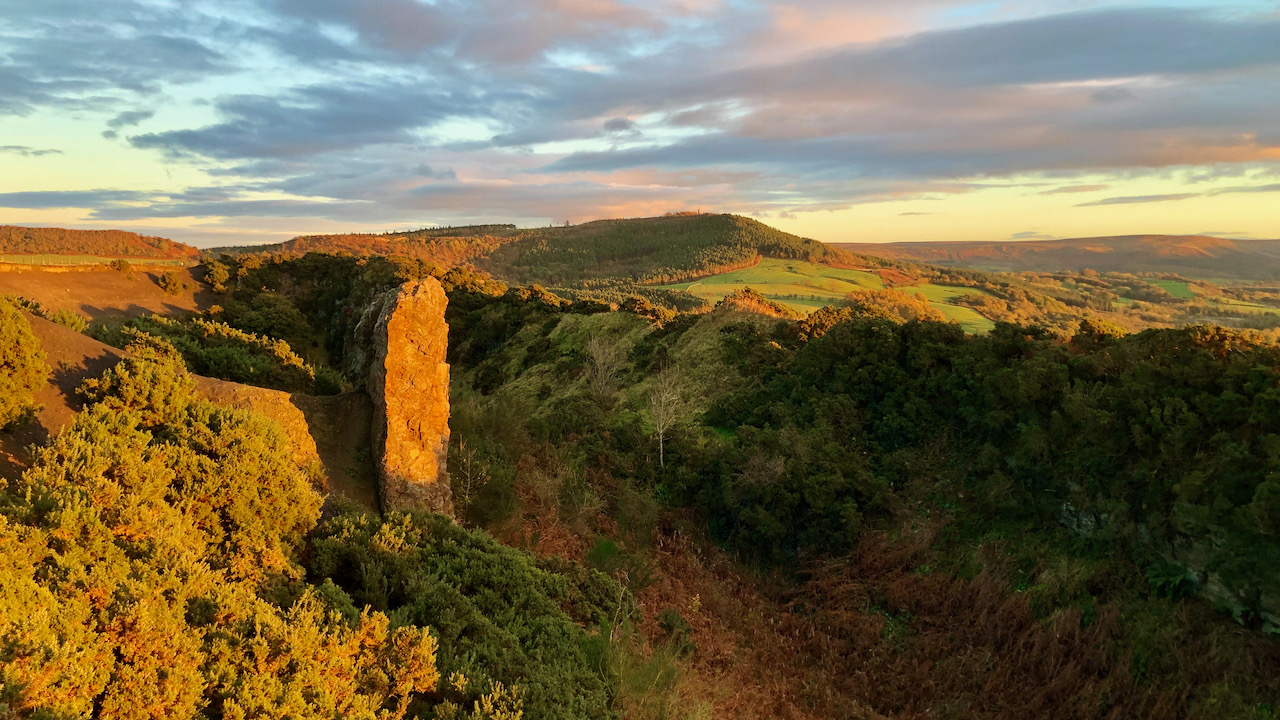A morning spent volunteering alongside the National Trust, cutting sycamore saplings in Cliff Rigg Wood. Not exactly a photogenic opportunity, but later the dog was insistent that we ascend the ridge to bask in the waning afternoon sun. There, the lighting nicely highlighted a strange remnant from a bygone industrial era, the rocky pinnacle once referred to as the ‘scab.’
This ‘scab’ is what remains of a sturdy whinstone wall, left behind to prevent the softer sedimentary shales from collapsing. Whinstone, an extremely hard rock, has been extensively quarried, though the upper quarry at Cliff Rigg had its share of quality issues. Most of the good stone was extracted from lower down through mining1Cliff Rigg Geotrail leaflet produced by Tees Valley RIGS Group www.tvrigs.org.uk.
Whinstone is a part of the Cleveland Dyke, a relic from around 59 million years back. It was born when scalding hot, molten magma swiftly infiltrated the sedimentary layers. The magma cooled in a hurry, resulting in the formation of a robust, dark rock.
This molten rock originated from a volcanic hotspot centred on the Island of Mull in the Inner Hebrides. It played a role in the extensive volcanic activities that accompanied the birth of the North Atlantic Ocean as the continents parted ways. This volcanic hotspot, or ‘plume,’ created a molten cauldron beneath the Earth’s crust, spewing forth vast quantities of magma.
That was a good two million years ago, and since then, the Earth has endured the comings and goings of many ice ages. These glaciers advanced and retreated, leaving behind deposits of till, mostly down in the Tees plain. The whinstone, being more resilient to the ice’s erosive tendencies, now stands proud, forming the prominent Langbaurgh ridge that stretches westward toward Nunthorpe.
The hard whinstone rock served a variety of purposes, from road construction to the fashioning of oblong blocks, known as setts, popular for paving streets in many towns. On the odd occasion, it even found its way into buildings, such as Grey Towers in Nunthorpe.
- 1Cliff Rigg Geotrail leaflet produced by Tees Valley RIGS Group www.tvrigs.org.uk

Leave a Reply